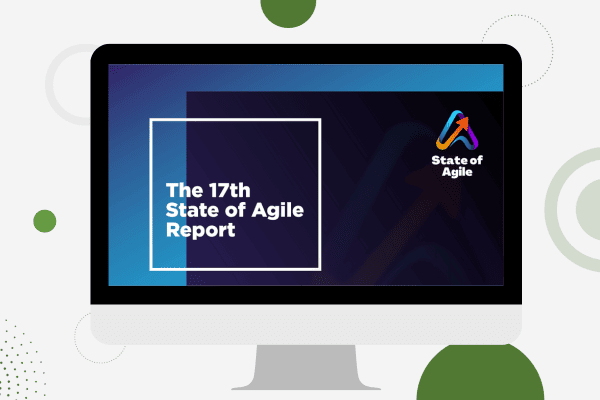Characteristics of Agile Development Success
Discover the key to building a successful agile software development process by learning about key characteristics for software teams.
Agile software development represents a paradigm shift in building and delivering software. It answers the need for adaptability and flexibility in a world where business requirements and customer preferences continuously change. This guide explores the agile software development process in depth, offering insights into its key concepts, methodologies, tools, team dynamics, challenges, and current trends.
What is Agile Development?
Agile development is an incremental and iterative approach to software development. Unlike traditional methods, which emphasize extensive planning and predictable delivery schedules, agile focuses on adaptability and customer satisfaction through continuous feedback.
The Importance of Agile Development
Agile software development addresses many shortcomings of traditional waterfall software development models. By facilitating rapid iteration and adjustment, agile ensures that the final product satisfies customer needs, offering better risk management, improved product quality, enhanced project visibility, and increased project control.
Key Concepts and Principles in Agile Development
Twelve principles outlined in the Agile Manifesto are at the core of agile development. These include prioritizing customer satisfaction through early and continuous software delivery, welcoming changing requirements, frequently delivering working software, and promoting close collaboration between business people and developers throughout the project.
Value-driven development
The main focus of agile development methods is on continuously delivering business value, as measured by running tested software. The primary team focus is on product features as the planning, tracking, and delivery unit. In addition to working features, the team must also build the required documentation and artifacts that support these features. Each “feature” must focus on prioritized business value and be small enough to deliver in a single iteration.
While different agile development methodologies use unique nomenclature to describe a feature, all are concerned with the same thing: discrete units of product functionality.
Agile Software Development Methodologies
Several methodologies fall under the agile umbrella, including Scrum, Kanban, Extreme Programming (XP), and Lean Software Development. Each methodology has its practices, but all share the goal of facilitating the rapid production of high-quality software.
Agile Development Process
The agile development process is cyclical, consisting of stages that repeat throughout the project lifecycle.
Overview of the Agile Development Cycle
The cycle begins with project planning, moves into iterative development phases where features are designed, developed, and tested, and concludes with a review and retrospective before the next cycle begins.
Agile software development follows a delivery model that consists of two main units: releases and iterations. A release comprises several iterations, each of which is like a micro-project. The tasks are prioritized and assigned to the iterations within a release based on their importance. In this context, tasks could be defined as features, enhancements, and defects and are organized therein. Here is a summary diagram that explains the process:

Agile development projects rely on the steady beat of fixed-length iterations. Each iteration produces a continuous stream of new, tested features that enable the team to stay on track. Meaningful feedback is obtained from the features that emerge from these time-boxed iterations, which helps answer questions like “How much work did we complete last month compared to our projections?” “How much work did we get done compared to the previous month?” and “How many features can we realistically complete within the iteration?”.
The strict deadlines in an agile development release cycle can be challenging, but they help the team stay focused. After the last iteration, where positive or negative outcomes were visible to everyone, the team concentrates on improving the process for the next iteration. This helps them avoid adding unnecessary features, being vague about the project’s scope, or allowing scope creep. The team understands that every week, day, and hour is valuable, and they work together to maximize business value delivered within a time box.
To represent the iterative nature of the agile development process, a set of interlocking gears can be used as a metaphor. Each gear represents a stage in the development cycle, and the speed at which it turns represents the pace of progress in that stage. As each gear turns, it drives the next one in the sequence, and the entire system works together to achieve the desired outcome.
The agile development team plans work on and completes tasks daily while the software is designed, coded, tested, and integrated for customer acceptance. The team plans, tests, and delivers working software in each iteration. For each release, the team plans, tests, and deploys software into production. Team collaboration and communication happens across the agile development process to coordinate and successfully deliver within a highly adaptive and productive lifecycle.
As the iterations progress, the team becomes more efficient and the deadlines for each iteration become less daunting. Once the team has become accustomed to the process, they can focus on continuous improvement, learning and mentoring, and implementing other best practices.
Agile Project Planning
Agile project planning is less about creating detailed, long-term plans and more about establishing a product backlog, prioritizing features, and planning for the upcoming iteration.
Planning in Agile Projects
Agile projects allow up-front planning but hold it accountable for the required resources. Agile planning relies on solid, historical data and not on speculation. The most crucial aspect of agile planning is that it continues throughout the project. Nobody on an agile project takes the plan for granted, and it must continuously prove its accuracy.
At the beginning of an agile project, enough planning is done to begin the initial iteration and create a high-level release plan of features. Iteration is the main component of continuous planning. Each iteration is like a mini-project that receives “just enough” of its own planning. At the beginning of each iteration, the team prioritizes a set of features to implement and estimates each technical task for each feature. This planning process repeats for each iteration.
Agile development projects typically involve more and better planning than waterfall projects. When waterfall projects are deemed “successful,” they are often criticized for only delivering what was initially requested in the requirements document without considering the evolving needs and discoveries of stakeholders throughout the project’s lifecycle. This can lead to a less optimal outcome for the stakeholders. Waterfall projects get married to every flaw in the original plan and can only “work the plan” in its original static state. Agile planning, based on solid, accurate, recent data, allows priorities and scope to evolve within reason to accommodate the inescapable ways business needs continuously evolve. Continuous planning helps the team and the system focus on maximum business value by the deadline.
Agile projects allow planning to be done in advance, but it is held accountable for the necessary resources. This planning is based on historical data, ensuring it remains accurate and reliable. The planning process continues throughout the project, each iteration acting as a mini-project. This process allows the team to select a set of features, identify and estimate each technical task, and repeat the planning cycle for each iteration. Agile development projects enable better planning than waterfall projects, which usually deliver only the initial requests in the requirements document. Agile development relies heavily on continuous planning, allowing flexibility in accommodating the changing needs of the business. This approach helps in adjusting priorities and scope within reason, as required.
In agile development, it’s more accurate to plan on at least two levels: release and iteration. At the release level, we prioritize the features we need, want, and can do without by the deadline. At the iteration level, we plan the next set of features to implement in priority order. If features are too big to be estimated or delivered within an iteration, we break them down further. Features are scheduled for an iteration and divided into small technical tasks.
This planning approach is called just-in-time and is more accurate than large-scale up-front planning. It aligns the level of information available with the level of detail necessary. This way, we don’t have to make guesses about features in the future or waste time planning at a level of detail that the available information does not support. Instead, we plan in smaller, more manageable steps.
If you need assistance managing your agile product requirements, epics, stories, and goals across multiple teams, products, and projects, Digital.ai Agility can help.
Relative estimation
Agile development teams often use the technique of relative estimation to simplify planning and reduce complexity. Instead of estimating features based on specific unit lengths, they categorize them into a small number of relative estimation buckets. For example, a team may use categories such as one to five days, one to three story points, or four to eighty hours.
With relative estimation, the categories are approximate multiples of one another. For instance, a three-day feature should take three times longer than a one-day feature. The goal is to avoid debating whether a feature is 17.5 units or 19 units, as the concepts of relative estimation and predefined estimation buckets prevent such debates. Although each individual estimate may not be precise, the overall benefit of saving time and effort by using this type of planning process often outweighs the costs of imprecise estimates. The team will progressively refine their estimation as they move forward with the project.
If a feature exceeds the maximum estimate, it must be broken down into multiple features. The goal is to deliver all the generated features within a single iteration, so if the team determines that the features should be at most five ideal days, any feature exceeding five days will be broken down into smaller features. This helps normalize the granularity of the features, so the ratio of feature sizes is not too large.
Planning, Executing, and Reviewing
Each iteration, or sprint, starts with a planning session to determine the work to be done. The development team then executes this plan. At the sprint’s end, the work is reviewed with stakeholders, followed by a retrospective to identify successes and areas for improvement.
Agile software development methodology prioritizes delivering functional and tested software features as a measure of progress. This approach allows the team to collaborate effectively, gather feedback from customers, and improves project visibility. The delivery of functional features provides evidence that the project is developing as per the plan and that the system is on track.
During the initial stages of a project, the team may only deliver a few features. However, with each iteration, the team becomes more efficient, and the application design, architecture, and business priorities are continuously evaluated as the system emerges. Throughout the development process, the team relies on customer feedback, user input, and stakeholder feedback to converge on the best business solution.
With each iteration, the progress towards the project’s goals becomes more apparent to everyone involved. The management can evaluate the progress and ensure that they are getting their money’s worth.
Agile development projects take a different approach to feature discovery compared to traditional software development processes. Instead of spending weeks or months detailing requirements, agile development projects prioritize and estimate features quickly. The details of each feature are then refined as necessary in subsequent iterations by having customers, testers, and developers work together to describe them in more detail.
Agile development offers a distinct advantage in that success can be consistently measured with actual software, which leads to greater focus, engagement, and confidence among programmers, customers, managers, and other stakeholders.
Digital.ai Agility provides an integrated suite of acceptance and regression test planning, tracking, and reporting that enables you to easily incorporate QA testing into your agile development projects.
One of the benefits of agile development is that success can be consistently measured with actual software, which gives the project a different feel than traditional projects. This approach keeps programmers, customers, managers, and other stakeholders focused, engaged, and confident.
With Digital.ai Agility, it’s possible to incorporate QA testing into your agile development projects. This is done through an integrated suite of acceptance and regression test planning, tracking, and reporting.
In software development, continuous testing is an essential practice that helps to measure progress and prevent defects. It involves testing features as they are developed, which reduces the risk of failure late in the project. Waiting until the end of a project to test everything is risky and can lead to discovering flaws that can’t be corrected in time. Agile development promotes continuous testing to avoid this risk and ensure the project stays on track. By testing features as they are developed, we can identify and fix issues early on, preventing costly delays and rework later in the project.
At both the unit and acceptance feature levels, we write the tests as the code is written beforehand. The most agile development projects strive to automate as many tests as possible, relying on manual tests only when necessary. This speeds testing and delivers software that behaves predictably, which in turn gives us more continuous and reliable feedback. There is an emerging wealth of new tools, techniques, and best practices for rigorous continuous testing; much of the innovation originates in the test-driven development (TDD) community.
When is a feature done? When all of its unit tests and acceptance tests pass and the customer accepts it. This is exactly what defines a running, tested feature. There is no better source of meaningful, highly visible project metrics.
Continuous Improvement and Learning
Continuous improvement is a critical element of agile development. Teams regularly reflect on their processes, tools, and interactions to find efficiencies and enhance productivity.
We continuously refine both the system and the project. We can adjust our estimates and plans by reflecting on what we have done using hard metrics like running, tested features, and more subjective measures. However, we also use the same mechanism to refine and improve the process successively.
Especially at the close of major milestones (iterations, releases, etc.), we may find problems with iteration planning, the build or integration process, islands of knowledge among programmers, or any number of other problems. We look for points of leverage from which to shift those problems.
We adjust the factory’s machines and acquire or invent new ones to keep doing it better with each release. We keep finding ways to adapt the process to deliver more value per unit of time to the customer, the team, and the organization. We keep maturing and evolving, like any healthy organism.
Tools in Agile Development
Agile teams use various tools to manage their projects, from software for tracking progress and collaboration to frameworks for automating builds and deployments.
Popular Tools
Tools like Agility, JIRA, Trello, Asana, and Slack are widely used in agile environments for project tracking, collaboration, and communication.
How to Choose the Right Agile Tool
Choosing the right tool depends on the team’s size, the project’s complexity, and specific needs for integration, reporting, and collaboration features.
Agile Development Teams
Agile teams are typically cross-functional, with members possessing all the skills necessary to deliver a product increment.
Roles and Responsibilities
Typical roles include the Product Owner, Scrum Master, and team members (developers, designers, testers). Each role has distinct responsibilities but collaborates closely with others.
Team Composition Size
Smaller agile development teams have proven to be much more productive than larger teams, with the ideal ranging from five to ten people. If you have to scale a project up to more people, make every effort to keep individual teams as small as possible and coordinate efforts across the teams. Scrum-based organizations of up to 800 have successfully employed a “scrum of scrums” approach to project planning and coordination.
With increments of production-ready software delivered at the end of every iteration, teams must also be cross-functional to succeed. An agile development team must include members with all the skills necessary to successfully deliver software, including analysis, design, coding, testing, writing, user interface design, planning, and management. We need this because, again, each iteration is its own mini-project.
Teams work together to determine how best to utilize one another’s skills and mentor each other. Teams transition away from designated testers, coders, and designers to integrated teams, where each member helps do whatever is needed to complete the iteration. Individual team members derive less personal identity from being a competitive expert with a narrow focus and increasingly derive identity and satisfaction from being part of an extraordinarily productive and efficient team. The team becomes more cohesive as the positive reinforcement accumulates from iteration to iteration—ambient levels of trust, camaraderie, empathy, collaboration, and job satisfaction increase. Software development becomes fun again. These outcomes are not guaranteed, but they are much likelier in well-managed agile development projects than elsewhere.
Collaboration and Communication
Effective collaboration and communication are vital in agile teams. Daily stand-up meetings, paired programming, and open communication channels help ensure everyone is aligned and can quickly address obstacles.
Challenges and Solutions
Implementing agile can come with challenges, from resistance to change to managing distributed teams.
Common Obstacles in Implementing Agile
Resistance to change, lack of commitment from team members, and transitioning difficulties are common obstacles faced by organizations adopting agile.
Solutions and Best Practices
Overcoming these challenges involves:
- Comprehensive training.
- Executive support.
- Fostering a culture of openness and experimentation.
- Using agile coaches or mentors.
Current Trends in Agile Development
The 17th State of Agile report, sponsored by Digital.ai lists several emerging trends in enterprise agile planning.
Recent trends include:
- Integrating agile with DevOps practices.
- Focusing on automation and continuous delivery.
- Applying agile beyond software development to other business areas.
Conclusion
Agile software development offers a robust framework for rapidly delivering high-quality software products in a dynamic environment. Organizations can achieve greater success in their software development efforts by understanding and embracing its principles, methodologies, and tools and by fostering a culture of collaboration, continuous improvement, and adaptability. The journey toward agile may have challenges, but the benefits—increased customer satisfaction, improved product quality, and enhanced team productivity—are worth the effort.




